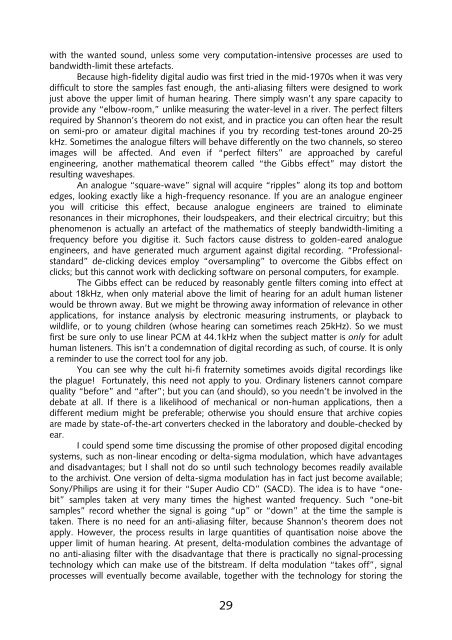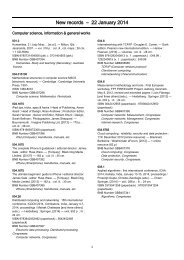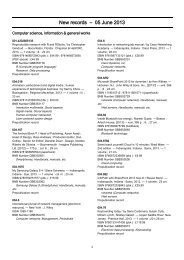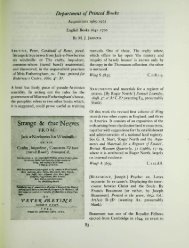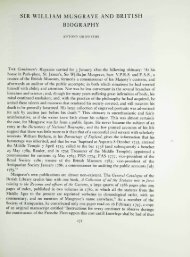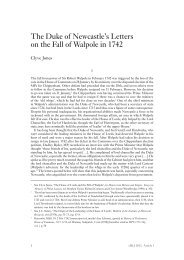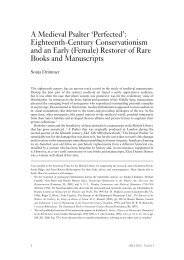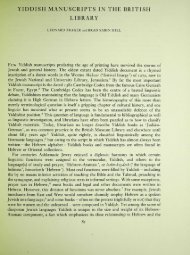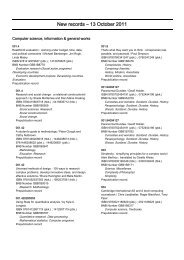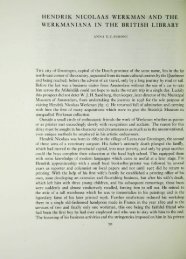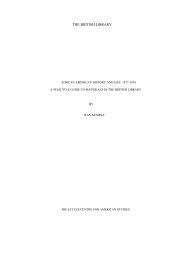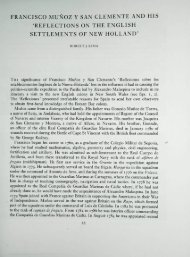MANUAL OF ANALOGUE SOUND RESTORATION ... - British Library
MANUAL OF ANALOGUE SOUND RESTORATION ... - British Library
MANUAL OF ANALOGUE SOUND RESTORATION ... - British Library
You also want an ePaper? Increase the reach of your titles
YUMPU automatically turns print PDFs into web optimized ePapers that Google loves.
with the wanted sound, unless some very computation-intensive processes are used to<br />
bandwidth-limit these artefacts.<br />
Because high-fidelity digital audio was first tried in the mid-1970s when it was very<br />
difficult to store the samples fast enough, the anti-aliasing filters were designed to work<br />
just above the upper limit of human hearing. There simply wasn’t any spare capacity to<br />
provide any “elbow-room,” unlike measuring the water-level in a river. The perfect filters<br />
required by Shannon’s theorem do not exist, and in practice you can often hear the result<br />
on semi-pro or amateur digital machines if you try recording test-tones around 20-25<br />
kHz. Sometimes the analogue filters will behave differently on the two channels, so stereo<br />
images will be affected. And even if “perfect filters” are approached by careful<br />
engineering, another mathematical theorem called “the Gibbs effect” may distort the<br />
resulting waveshapes.<br />
An analogue “square-wave” signal will acquire “ripples” along its top and bottom<br />
edges, looking exactly like a high-frequency resonance. If you are an analogue engineer<br />
you will criticise this effect, because analogue engineers are trained to eliminate<br />
resonances in their microphones, their loudspeakers, and their electrical circuitry; but this<br />
phenomenon is actually an artefact of the mathematics of steeply bandwidth-limiting a<br />
frequency before you digitise it. Such factors cause distress to golden-eared analogue<br />
engineers, and have generated much argument against digital recording. “Professionalstandard”<br />
de-clicking devices employ “oversampling” to overcome the Gibbs effect on<br />
clicks; but this cannot work with declicking software on personal computers, for example.<br />
The Gibbs effect can be reduced by reasonably gentle filters coming into effect at<br />
about 18kHz, when only material above the limit of hearing for an adult human listener<br />
would be thrown away. But we might be throwing away information of relevance in other<br />
applications, for instance analysis by electronic measuring instruments, or playback to<br />
wildlife, or to young children (whose hearing can sometimes reach 25kHz). So we must<br />
first be sure only to use linear PCM at 44.1kHz when the subject matter is only for adult<br />
human listeners. This isn’t a condemnation of digital recording as such, of course. It is only<br />
a reminder to use the correct tool for any job.<br />
You can see why the cult hi-fi fraternity sometimes avoids digital recordings like<br />
the plague! Fortunately, this need not apply to you. Ordinary listeners cannot compare<br />
quality “before” and “after”; but you can (and should), so you needn’t be involved in the<br />
debate at all. If there is a likelihood of mechanical or non-human applications, then a<br />
different medium might be preferable; otherwise you should ensure that archive copies<br />
are made by state-of-the-art converters checked in the laboratory and double-checked by<br />
ear.<br />
I could spend some time discussing the promise of other proposed digital encoding<br />
systems, such as non-linear encoding or delta-sigma modulation, which have advantages<br />
and disadvantages; but I shall not do so until such technology becomes readily available<br />
to the archivist. One version of delta-sigma modulation has in fact just become available;<br />
Sony/Philips are using it for their “Super Audio CD” (SACD). The idea is to have “onebit”<br />
samples taken at very many times the highest wanted frequency. Such “one-bit<br />
samples” record whether the signal is going “up” or “down” at the time the sample is<br />
taken. There is no need for an anti-aliasing filter, because Shannon’s theorem does not<br />
apply. However, the process results in large quantities of quantisation noise above the<br />
upper limit of human hearing. At present, delta-modulation combines the advantage of<br />
no anti-aliasing filter with the disadvantage that there is practically no signal-processing<br />
technology which can make use of the bitstream. If delta modulation “takes off”, signal<br />
processes will eventually become available, together with the technology for storing the<br />
29


